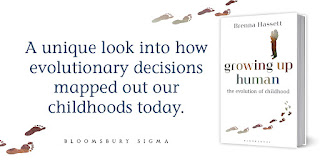Halet Çambel: Olympian, Activist, Archaeologist #trowelblazer repost
repost of my favorite ever #trowelblazer post! Gearing up to go into the field, so it's all about Turkey at the mo...

Halet Çambel, third from left, at the 1936 Berlin Olympics. Image: Murat Akman Archive.
Professor Halet Çambel is one of the most fascinating #trowelblazing women you never heard of. From a family of staunch friends of Atatürk himself, she was encouraged to participate in sport and represented Turkey in fencing at the 1936 Olympics--becoming the first-ever Muslim woman to compete in the Olympic games. Her stance there was unflinching; offered an opportunity to meet the Fürher himself she steadfastly refused.
She studied archaeology at the Sorbonne in Paris before returning to Turkey and building her career as an archaeologist, her poet and architect husband following her out into the field. She excavated the Hittite fortress of Karatepe, where she uncovered a sort of Hittite 'Rosetta Stone' with both Hittite and Phoenician scripts and still managed to spend at least part of her time teaching the local children. She was honoured with the Prince Claus award in 2004 for her pioneering work in conservation and cultural heritage protection. After a lifetime of fighting both for sport and against the threat of destruction to archaeological heritage and rural livelihoods posed by the rapid march of development, she remains an inspiration to archaeologists, ecologists, and humans in general to this day.
For more information, see this Nature News article , this BBC piece by @aylinboyzap or visit the Friends of Akyaka website.
Thanks to @gunesduru for the suggestion!
Written by Brenna (@brennawalks)
Edited and posted by Suzie (@suzie_birch)
Halet Çambel, third from left, at the 1936 Berlin Olympics. Image: Murat Akman Archive.
Professor Halet Çambel is one of the most fascinating #trowelblazing women you never heard of. From a family of staunch friends of Atatürk himself, she was encouraged to participate in sport and represented Turkey in fencing at the 1936 Olympics--becoming the first-ever Muslim woman to compete in the Olympic games. Her stance there was unflinching; offered an opportunity to meet the Fürher himself she steadfastly refused.
She studied archaeology at the Sorbonne in Paris before returning to Turkey and building her career as an archaeologist, her poet and architect husband following her out into the field. She excavated the Hittite fortress of Karatepe, where she uncovered a sort of Hittite 'Rosetta Stone' with both Hittite and Phoenician scripts and still managed to spend at least part of her time teaching the local children. She was honoured with the Prince Claus award in 2004 for her pioneering work in conservation and cultural heritage protection. After a lifetime of fighting both for sport and against the threat of destruction to archaeological heritage and rural livelihoods posed by the rapid march of development, she remains an inspiration to archaeologists, ecologists, and humans in general to this day.
For more information, see this Nature News article , this BBC piece by @aylinboyzap or visit the Friends of Akyaka website.
Thanks to @gunesduru for the suggestion!
Written by Brenna (@brennawalks)
Edited and posted by Suzie (@suzie_birch)



Comments
Post a Comment